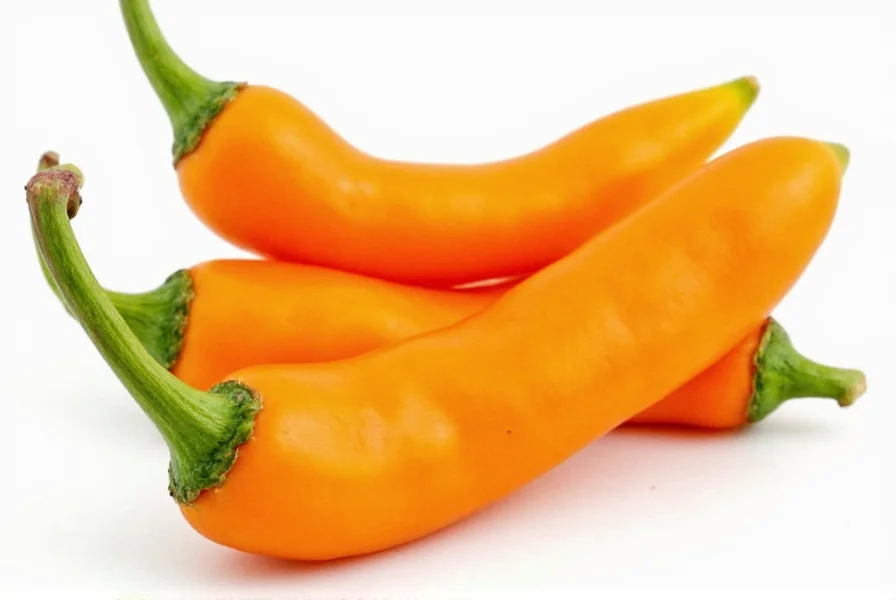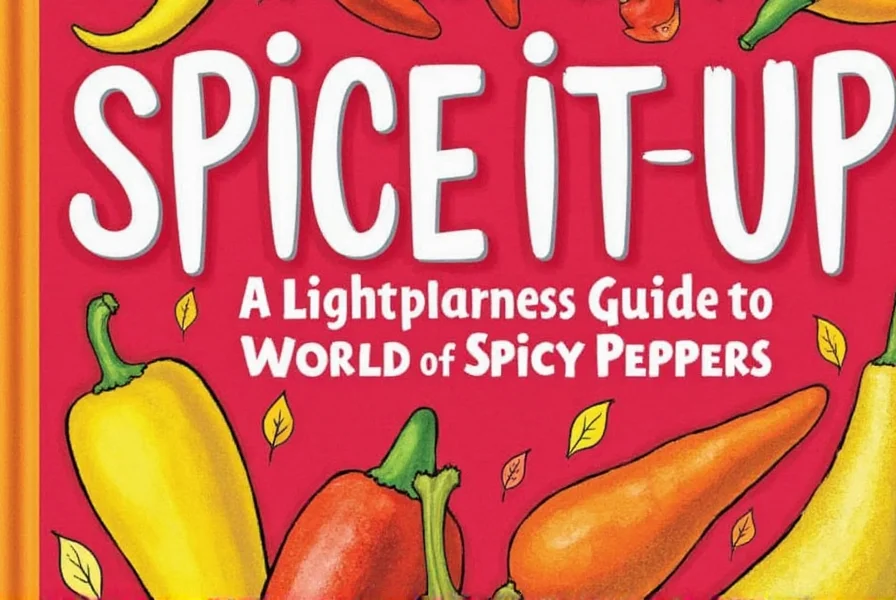Table of Contents
Introduction to Spicy Peppers
Spicy peppers are a culinary staple worldwide, offering unique heat levels and flavors that transform dishes. Understanding their Scoville Heat Units (SHU), flavor profiles, and ideal applications helps you choose the perfect pepper for any recipe. This guide covers the most popular varieties, safe handling techniques, and practical buying advice to elevate your cooking.
The Different Types of Spicy Peppers
Here's a comprehensive comparison of major spicy pepper varieties by heat level, flavor, and culinary use. The Scoville scale measures capsaicin concentration, with higher numbers indicating greater heat intensity.
| Pepper Name | Heat Level (SHU) | Flavor Profile | Best Culinary Applications |
|---|---|---|---|
| Jalapeño | 2,500–8,000 | Mild, slightly sweet | Guacamole, salsas, stuffed peppers, Mexican cuisine |
| Serrano | 10,000–25,000 | Crunchy, citrusy | Hot sauces, fresh salsas, tacos, Asian stir-fries |
| Chipotle | 1,000–8,000 | Smoky, earthy | Adobo sauce, chili, barbecue marinades, braised meats |
| Cayenne | 30,000–50,000 | Pungent, sharp | Seasoning blends, hot sauces, Indian/Thai curries, spice rubs |
| Habanero | 100,000–350,000 | Floral, tropical fruit | Caribbean jerk sauces, mango-based salsas, hot sauces, tropical cocktails |
| Ghost Pepper (Bhut Jolokia) | 855,000–1,000,000 | Earthy, fruity | Extreme hot sauces, chili challenges, specialty curries |
| Carolina Reaper | 1,400,000–2,200,000 | Fruity, sweet | Record-breaking hot sauces, extreme challenges, specialty dishes |

Key insights: Jalapeños and chipotles are ideal for beginners, while habaneros and ghost peppers suit experienced heat seekers. The Carolina Reaper, currently the world's hottest pepper, delivers intense heat with surprising fruity notes. Always match pepper heat to your dish's flavor profile and your tolerance level.
Why Do Peppers Feel Spicy?
The heat in peppers comes from capsaicin, a compound that binds to TRPV1 receptors in your mouth. This tricks your brain into sensing heat, even though no actual temperature change occurs. Interestingly, capsaicin also provides health benefits including pain relief, metabolism boost, and anti-inflammatory properties.
Practical Tips for Handling Spicy Peppers
Follow these safety guidelines to avoid discomfort when working with spicy peppers:
- Wear food-safe gloves: Capsaicin oils can cause severe skin irritation. Always wear gloves when handling hot peppers.
- Never touch your face: Avoid contact with eyes, nose, or sensitive skin areas after handling peppers.
- Use separate cutting tools: Designate specific knives and cutting boards for spicy peppers to prevent cross-contamination.
- Remove seeds and membranes: These contain 80% of the capsaicin. Use a spoon to scrape them out carefully.
- Have dairy products ready: Milk, yogurt, or cheese neutralize capsaicin better than water. Keep them nearby during preparation.
Buying Guide for Spicy Peppers
Learn how to select fresh, high-quality peppers for optimal flavor and heat:
Jalapeño
How to select: Choose firm, glossy green peppers with smooth skin. Avoid soft spots or wrinkles. Smaller peppers tend to be hotter. For sweeter flavor, look for red jalapeños.
Storage: Store unwashed in a sealed container in the refrigerator crisper drawer for up to 2 weeks.
Best uses: Perfect for fresh salsas, guacamole, stuffed peppers, and mild Mexican dishes.
Habanero
How to select: Look for bright orange or red peppers with smooth, unblemished skin. Avoid wrinkled or soft peppers. Smaller habaneros often have higher heat levels.
Storage: Refrigerate in a paper towel-lined container for up to 10 days. Freeze whole for longer storage.
Best uses: Ideal for Caribbean jerk sauces, tropical salsas, hot sauces, and spicy desserts.

Carolina Reaper
How to select: Choose bright red peppers with a distinctive tail. Avoid any blemishes or soft spots. Handle with extreme caution using gloves.
Storage: Store in a sealed container in the refrigerator for up to 7 days. Freeze for longer preservation.
Best uses: Only for experienced heat seekers in extreme hot sauces, specialty challenges, and highly controlled culinary experiments.
Cayenne
How to select: For fresh cayenne, look for firm, bright red peppers with smooth skin. For powder, choose vibrant red color with no clumping.
Storage: Fresh cayenne: refrigerate for up to 10 days. Powder: store in airtight container away from light for up to 6 months.
Best uses: Essential for seasoning blends, Indian curries, Thai cuisine, and homemade hot sauces.

Conclusion
Spicy peppers offer incredible flavor diversity beyond mere heat. From mild jalapeños to the record-breaking Carolina Reaper, each variety brings unique characteristics to your dishes. By understanding heat levels, proper handling techniques, and selection criteria, you can confidently incorporate peppers into any recipe while ensuring safety and optimal flavor.
Frequently Asked Questions About Spicy Peppers
What is the Scoville scale and how does it work?
The Scoville scale measures pepper heat intensity based on capsaicin concentration. Developed in 1912, it originally used human taste testers to determine heat levels. Modern methods use high-performance liquid chromatography for precise measurements. Scoville Heat Units (SHU) indicate how much sugar water is needed to neutralize the heat—higher numbers mean greater intensity.
Which pepper is currently considered the hottest in the world?
The Carolina Reaper holds the Guinness World Record as the hottest pepper, averaging 1,641,183 SHU with some specimens exceeding 2.2 million SHU. It surpassed the Ghost Pepper (Bhut Jolokia) in 2013 and remains the official hottest pepper as of 2025.
How can I reduce the heat of a spicy pepper when cooking?
Remove seeds and white membranes where capsaicin concentrates. Soak peppers in salt water or dairy products before cooking. Add sweet ingredients (sugar, honey) or acidic elements (vinegar, citrus) to balance heat. Avoid using water, as it spreads capsaicin rather than neutralizing it.
Why do spicy peppers make my mouth burn if they're not actually hot?
Capsaicin binds to TRPV1 receptors in your mouth that detect heat. This tricks your brain into sensing burning pain without actual temperature change. This neurological response explains why drinking water doesn't help—only dairy or fats effectively neutralize capsaicin.
Are spicy peppers good for your health?
Yes, capsaicin provides multiple health benefits including pain relief, metabolism boost, and anti-inflammatory effects. Peppers are rich in vitamins A and C, antioxidants, and may improve cardiovascular health. However, extremely hot peppers should be consumed in moderation to avoid digestive discomfort.
How do I treat skin irritation from handling spicy peppers?
Immediately wash with soap and cold water. For severe irritation, use rubbing alcohol or dairy products like milk to dissolve capsaicin oils. Never use hot water, as it opens pores and increases absorption. If eye contact occurs, rinse with milk or saline solution and seek medical attention if discomfort persists.
Can I grow spicy peppers at home?
Yes! Most peppers thrive in warm climates with 6-8 hours of sunlight. Start seeds indoors 8-10 weeks before last frost. Use well-draining soil and water consistently. Hot peppers often take longer to mature than sweet varieties. Container gardening works well for balcony or patio growing.
How should I store spicy peppers to keep them fresh?
Whole fresh peppers: store unwashed in a sealed container in the refrigerator crisper drawer for 1-2 weeks. For longer storage: freeze whole or sliced peppers in airtight bags (6-12 months). Dry peppers by hanging or using a dehydrator. Preserve in vinegar or oil for shelf-stable storage (up to 1 year).










 浙公网安备
33010002000092号
浙公网安备
33010002000092号 浙B2-20120091-4
浙B2-20120091-4